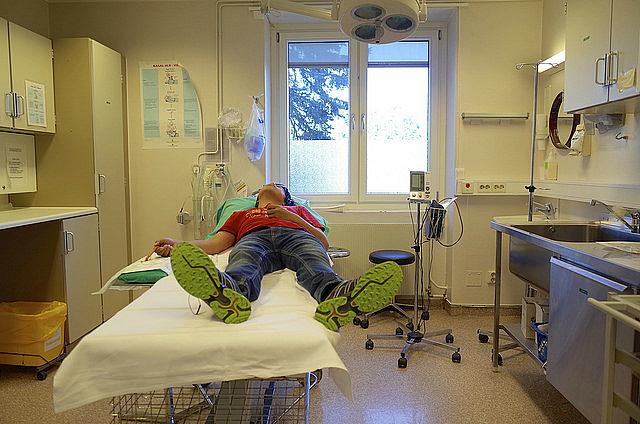Disparities Watch: Black kids with appendicitis given pain meds less often than white kids

Reports of racial disparities in health care are always disturbing. But there is something particularly disheartening when found among children in acute pain.
A study published earlier this week in JAMA Pediatrics provides evidence of just that, with data showing that black children with appendicitis were less likely to receive pain treatment than white children. “Black patients with moderate pain were less likely to receive any analgesia, and black patients with severe pain were less likely to be treated with opioids,” the researchers wrote.
The study used a huge data set from the National Hospital Ambulatory Medical Care Survey to look at emergency department visits for patients 21 and younger who were diagnosed with appendicitis, from 2003 to 2010. They found that among patients with moderate pain, black children had about a 16 percent chance of receiving pain treatment, while white kids had a 59 percent chance of receiving relief. Among those with severe pain, where opioid painkillers are commonly used, black kids had a far lower probability of receiving opioids (25 percent) than their white peers (58 percent). Overall, black youth with appendicitis had about a 12 percent chance of receiving opioids, compared with 34 percent for white patients.
![[Figure from JAMA Pediatrics, published online Sept. 14, 2015]](/sites/default/files/styles/inline_image/public/u1859/Screen%20Shot%202015-09-16%20at%209.26.21%20AM_0_1.png?itok=feQDZgCK)
“Black children are less likely to receive any pain medication for moderate pain and less likely to receive opioids for severe pain, suggesting a different threshold for treatment,” the study concluded.
Even if you’re no stranger to the prevalence of racial disparities in health care, that’s still a staggering finding. Aaron E. Carroll, a pediatrician who writes for The New York Times’ The Upshot and hosts the popular YouTube series, “Healthcare Triage,” expressed his dismay over the findings in a post on The Incidental Economist: “[E]very once in a while, a study gets published that gets past my eye roll and makes me angry all over again.”
It’s not easy to pinpoint what’s going on here, and the study’s authors aren’t sure why doctors are so much less likely to prescribe opioids when the patient is black. But they point out that doctors are making different decisions to treat otherwise similar levels of pain:
Our findings suggest that although clinicians may recognize pain equally across racial groups, they may be reacting to the pain differently by treating black patients with non-opioid analgesia, such as ibuprofen and acetaminophen, while treating white patients with opioid analgesia for similar pain.
An earlier study looking at racial disparities in how painkillers are prescribed suggested that some physicians may “trust minority patients less than white patients,” but as this week’s JAMA study notes, that bias would seem less relevant when the opioids are delivered in the emergency department rather than, say, a prescription for outpatient care.
Carroll efficiently shuts down any easy excuses for such unequal prescribing behavior in his take on the study:
These were children who all had been diagnosed with appendicitis, so any concerns about racial differences in ED use in general being involved go out the window. Black children only comprised 9 percent of the study population. This is an acute condition, and there’s no reason I can think of that you would treat black and white kids differently. These are also kids, so no talk about drug-seeking behavior, please. They’re only going to get acute administration of pain meds in the ED, for their acute appendicitis. Let’s also acknowledge that opioids are falling out of favor, but that’s mostly for chronic pain. Not the acute pain of appendicitis.
Meanwhile, the disparity means that black children in acute pain from appendicitis are receiving effective pain treatment much less often than their white counterparts. That shouldn’t be possible. ER docs owe it to such kids to search their own prescribing habits for evidence of bias, unconscious or otherwise.
[Photo by Erik via Flickr.]

